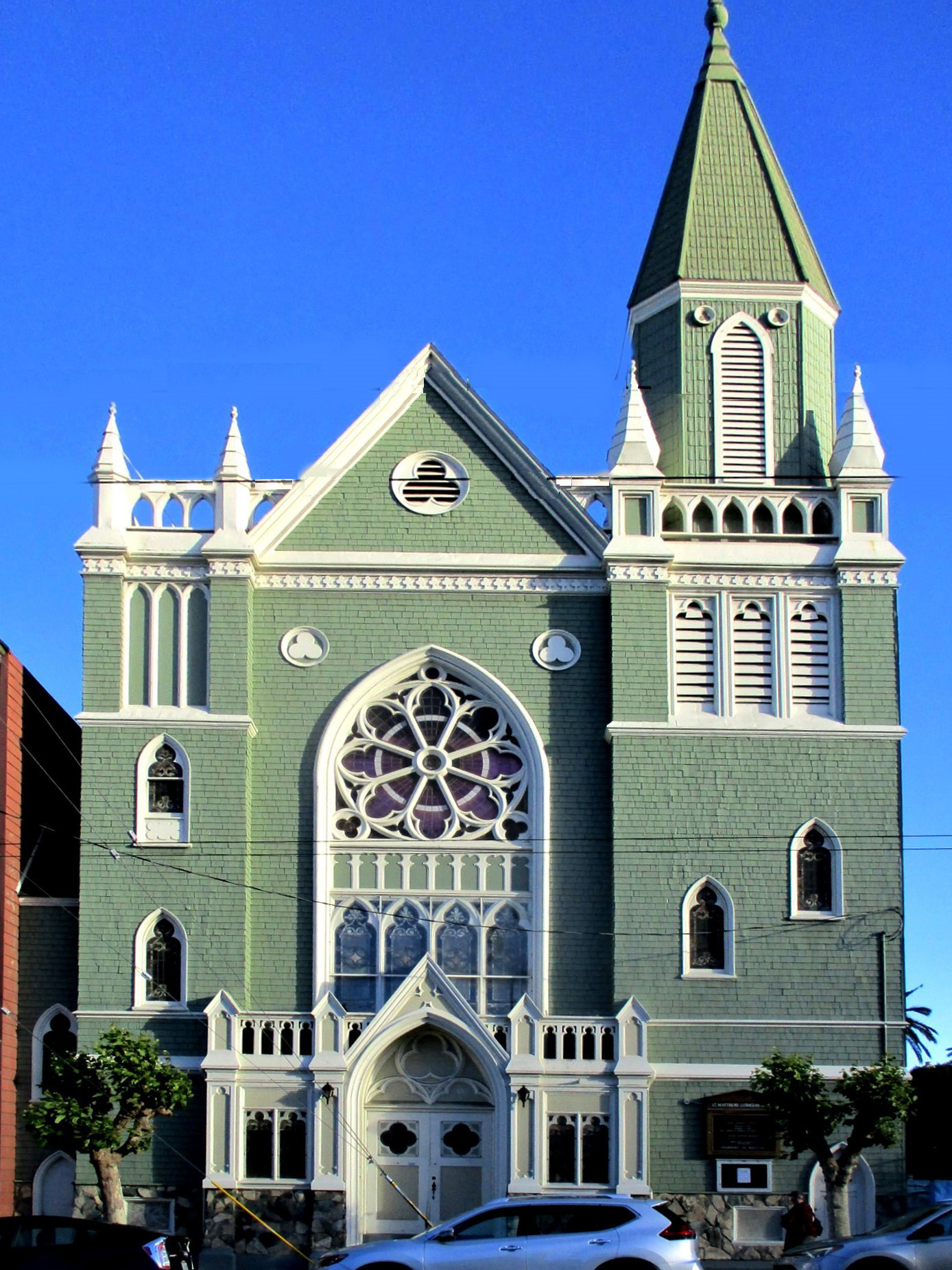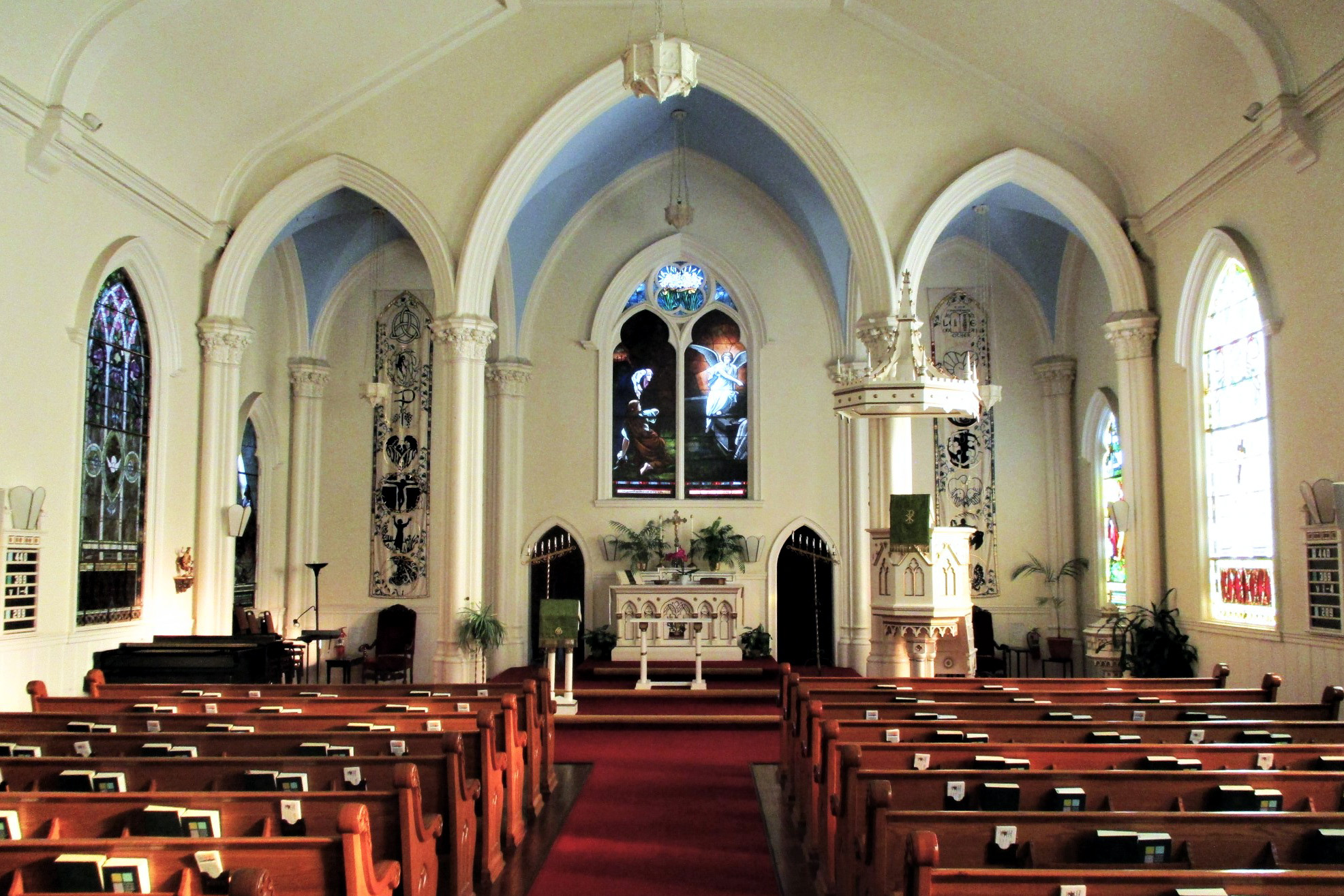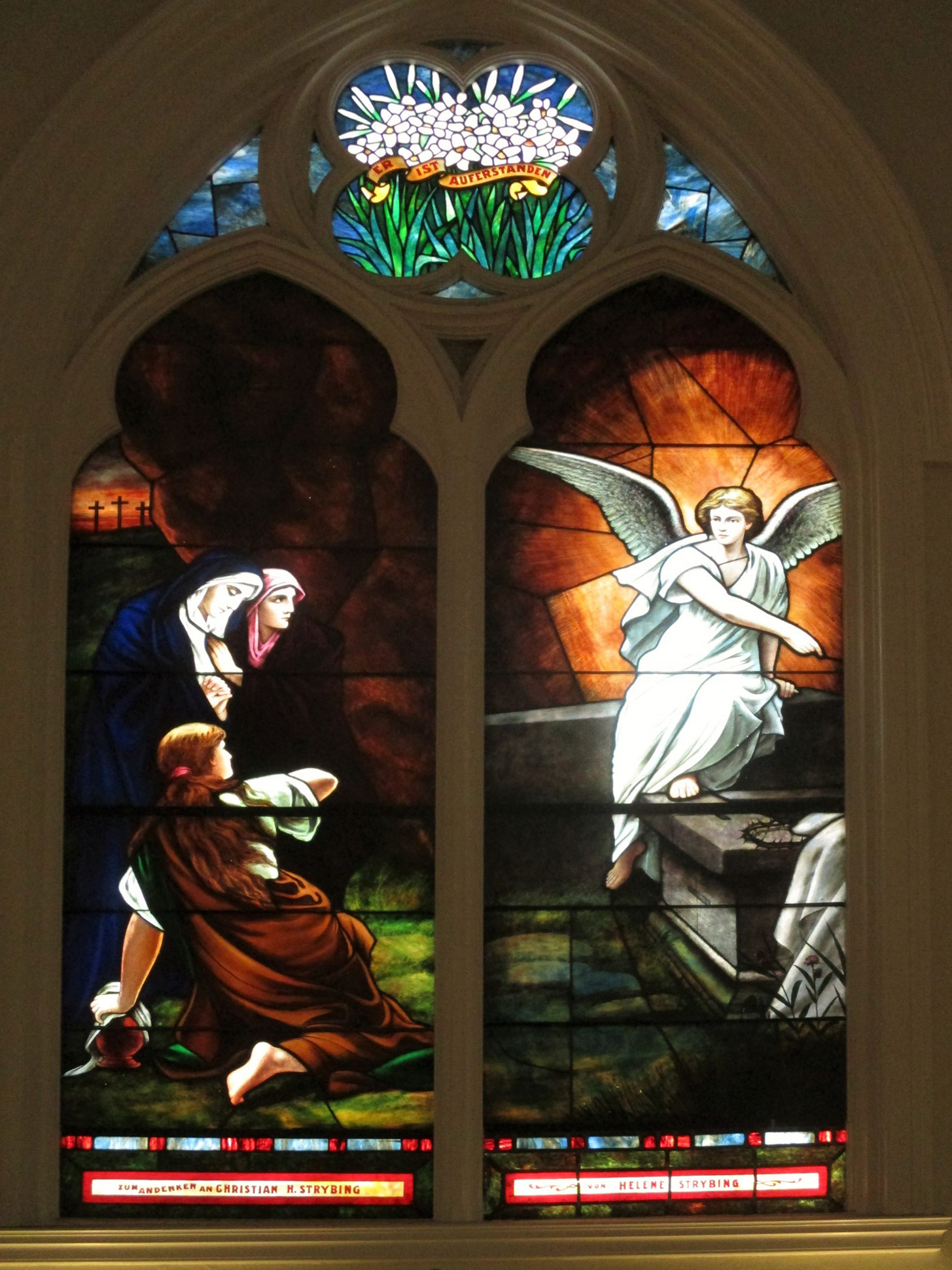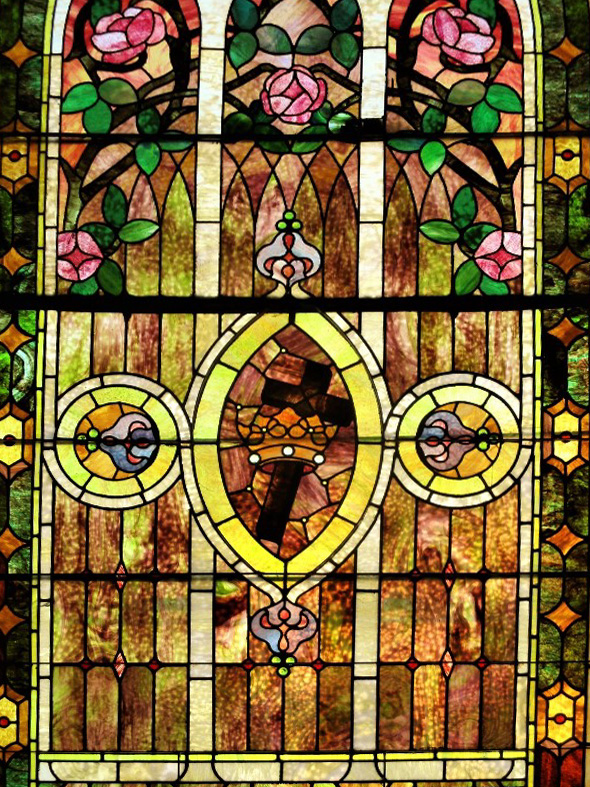| |
 |
 |
 |
| Comment on this report, or find other reports. |
 |
| Our Mystery Worshippers are volunteers who warm church pews for us around the world. If you'd like to become a Mystery Worshipper, start here. |
 |
| Find out how to reproduce this report in your church magazine or website. |
|
|
| 3316: St Matthew's, San Francisco, California, USA |
 |
 |
 |
Mystery Worshipper: Portola.
The church: Evangelisch-Lutherische St Matthäus-Kirche (St Matthew's Evangelical Lutheran Church), San Francisco, California, USA.
Denomination: Evangelical Lutheran Church in America, Sierra Pacific Synod. They also have ties to the Evangelical Church in Germany and the German Evangelical Lutheran Conference in North America, among other organizations.
The building: This neo-Gothic church, built almost entirely of wood, was dedicated in 1908. It was the successor to the first church, which had been destroyed by the great earthquake of 1906. St Matthew’s was reportedly modeled after a church in Hildesheim, Germany, that was the home church of the first pastor of St Matthew’s, the Revd Hermann Gehrcke. The brilliantly colorful stained glass windows are like jewels.
The church: After the Gold Rush of 1849, people from all over the world came to California seeking riches, including numerous Germans. St Matthews’s was established in 1895 as a German Lutheran church. At around 1900 there were thirteen churches and two synagogues in San Francisco for German-speaking people.
During the two World Wars, Germans in America were regarded with suspicion and animosity. In order to be less conspicuous during wartime, many German congregations surrendered their native language services and displayed American flags in their sanctuaries to demonstrate loyalty. By 1941 all churches in San Francisco, except St Matthew’s, had given up services in German. During WWII the pastor of St Matthew’s ministered to about 5,000 nearby German prisoners of war. After the war, St Matthew’s collected food, clothing and money for Germans in Europe suffering from the devastation of warfare. After the war, a new wave of German immigrants moved into San Francisco, giving the congregation new members and renewed energy.
St Matthew’s claims to be the only church in northern California that still offers weekly services in the German language. In summer there is one bilingual service every Sunday; during the rest of the year there are two services every Sunday: one in English, one in German.
St Matthew’s has about 120 members, but it functions as a community center for many more people with a German background. It is a venue for concerts and celebrations of German choral groups and a German accordion youth orchestra, as well as various school and athletic groups.
Among the activities of the congregation: an annual open-air service and picnic in a park, an annual fund-raising crab feed, Bible studies, and food and clothing collections.
The neighborhood: Directly across the street from St Matthew’s is Mission San Francisco de Asis (better known as Mission Dolores), founded in 1791 by associates of St Junipero Serra, the "Apostle of California," who founded a chain of missions up and down the California coast. It is the oldest surviving structure in San Francisco and gave the city its name. Across the corner from St Matthew’s is a Reformed synagogue. While the synagogue was being renovated a while ago, the Jewish congregation worshiped in the sanctuary of St Matthew’s for a year, and the two congregations come together for an annual Thanksgiving prayer service.
The neighborhood is undergoing gentrification, as high-tech professionals have been moving in from Silicon Valley.
The cast: Celebrant and preacher: the Revd Kerstin Weidmann. Organist: Nicole Fahlmann (a substitute organist).
The date & time: Second Sunday after Pentecost, June 10, 2018, 10.00am.
Comment:
We have received a comment on this report.
What was the name of the service?
Bilingual Service with Communion.
How full was the building?
An estimated 25 people, about one-tenth full.
Did anyone welcome you personally?
The pastor greeted me at the entrance door.
Was your pew comfortable?
Yes.
How would you describe the pre-service
atmosphere?
There was organ music. People came in quietly. Although we were in the middle of the sanctuary, almost the entire congregation sat behind us.
What were the exact opening words of the
service?
"Welcome to St Matthew’s Lutheran Church!"
What books did the congregation use during the
service?
The Lutheran Book of Worship and Evangelisches Gesangbuch für Bavaria und Thuringia.
What musical instruments were played?
The organ, built 1923 by the Hinners Organ Company and restored in 2016 by the Schoenstein Organ Company.
Did anything distract you?
The biggest distraction was the organ accompaniment, which, unfortunately, lacked reliability. The tempo of the hymns was often too slow and sometimes inconsistent. I was not able to concentrate on the hymn texts because I got into the habit of waiting for the next mistake or irregularity to occur. However, it must be said that the organist played well enough to enliven and enrich the service.

Was the worship stiff-upper-lip, happy clappy, or
what?
The service had the usual formality of Lutheran worship. The bilingual nature of the service was stimulating. The entire service was printed in English and German in parallel form. The pastor switched back and forth between the two languages. The congregation recited the Apostles’ Creed and the Lord’s Prayer simultaneously in both languages. The pastor spoke with animation, which gave the liturgy energy.
Communion was by intinction: the communicants were asked to dip the communion wafer in one of the two chalices containing wine or grape juice.
Exactly how long was the sermon?
16 minutes.
On a scale of 1-10, how good was the preacher?
7 – The pastor spoke with conviction and was easy to follow.
In a nutshell, what was the sermon
about?
The sermon was based on the gospel from Mark for this Sunday describing how Jesus’ mother and brothers tracked Jesus down because they wanted to bring him home so that he would fulfil his duties as eldest son. He responded by saying that he was building up a new family with mother, brothers and sisters. Accordingly, the church is like a family for those who are grounded in Christ. Like any family the church can be dysfunctional, but it is a family in which one should feel at home anywhere in the world and in which all have the same standing. It is a family that is becoming more diversified. One hopes that this increasing diversity will animate growth.
Which part of the service was like being in
heaven?
A hundred year old neo-Gothic church made of wood, a sanctuary painted white (the color of heavenly glory in the New Testament) with richly colored stained-glass windows – in short, a warm, inviting, enchanting atmosphere.

And which part was like being in... er... the other place?
I arrived at the church 15 minutes before the beginning of worship, but the door could not be opened from the outside. I thought at first that I had misunderstood the service time. Then I noticed that one had to ring a bell to get in. In my entire life I had never encountered such a situation. The reason for this safety measure was that a homeless person had once snuck into the open church and had tried to set up camp in a hidden corner of the building. The bell at the door was an indication of the deep gap between people with and without homes.
What happened when you hung around after the service looking lost?
One person asked me if I was a visitor and mentioned that there was coffee in the fellowship hall below the sanctuary.
How would you describe the after-service
coffee?
By the time I got to the coffee, the cream was gone; I drank it black, so it tasted bitter to me. But the main feature of after-service coffee is whether or not it is possible to talk with people. Today, it was possible to engage in long conversations.
How would you feel about making this church your regular (where 10 = ecstatic, 0 = terminal)?
6 – The church is beautiful and I can appreciate worship in two languages both of which I speak. But these features are not my highest priority.
Did the service make you feel glad to be a
Christian?
Yes.

What one thing will you remember about all this in seven days' time?
The admirable efficiency with which this congregation conducts bilingual services. |
|
|
 |
 |
 |
| We rely on voluntary donations to stay online. If you're a regular visitor to Ship of Fools, please consider supporting us. |
 |
 |
 |
| The Mystery Pilgrim |
 |
| One of our most seasoned reporters makes the Camino pilgrimage to Santiago de Compostela in Spain. Read here. |
 |
 |
 |
| London churches |
 |
| Read reports from 70 London churches, visited by a small army of Mystery Worshippers on one single Sunday. Read here. |
| |
|
|
|
|


